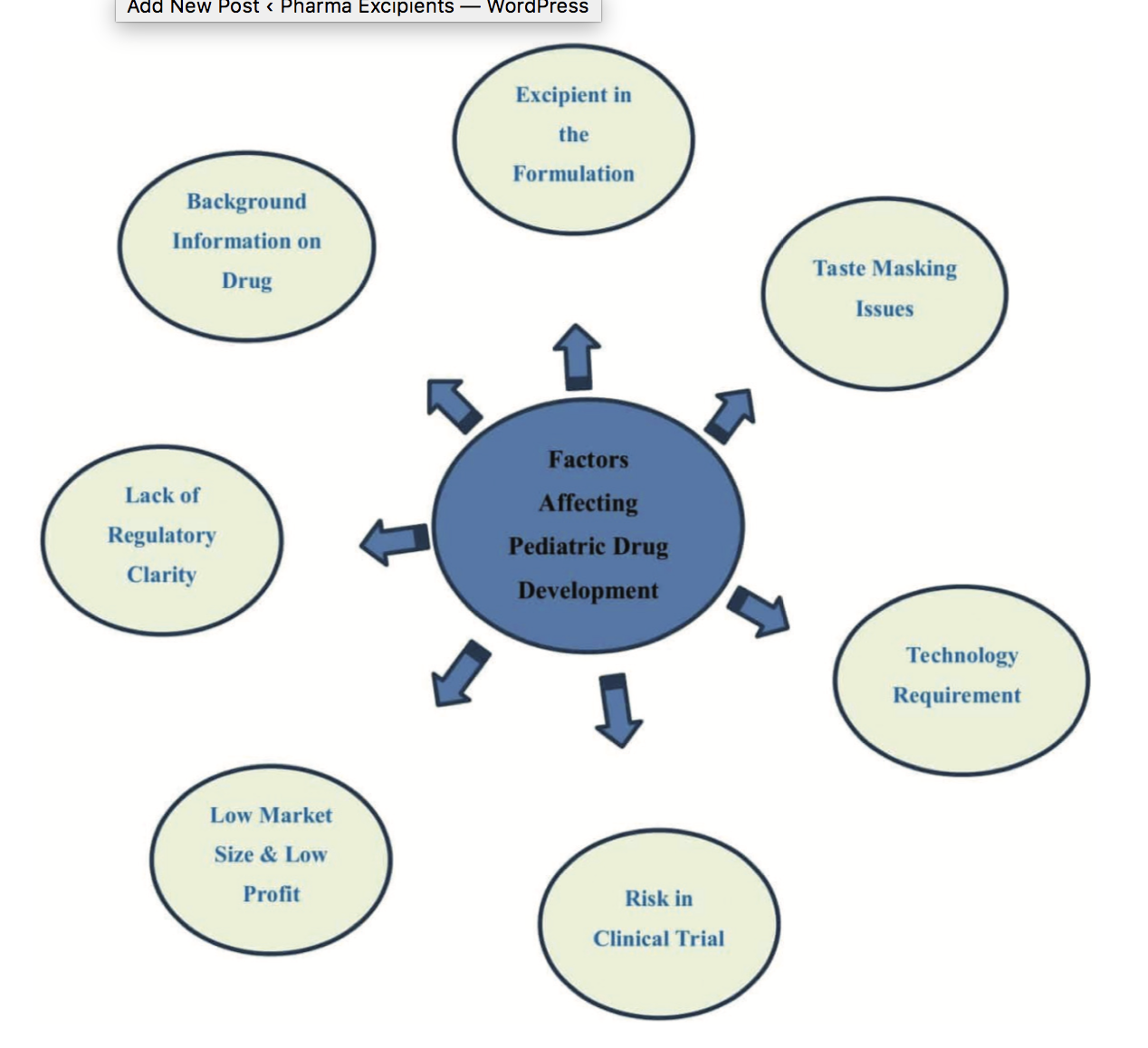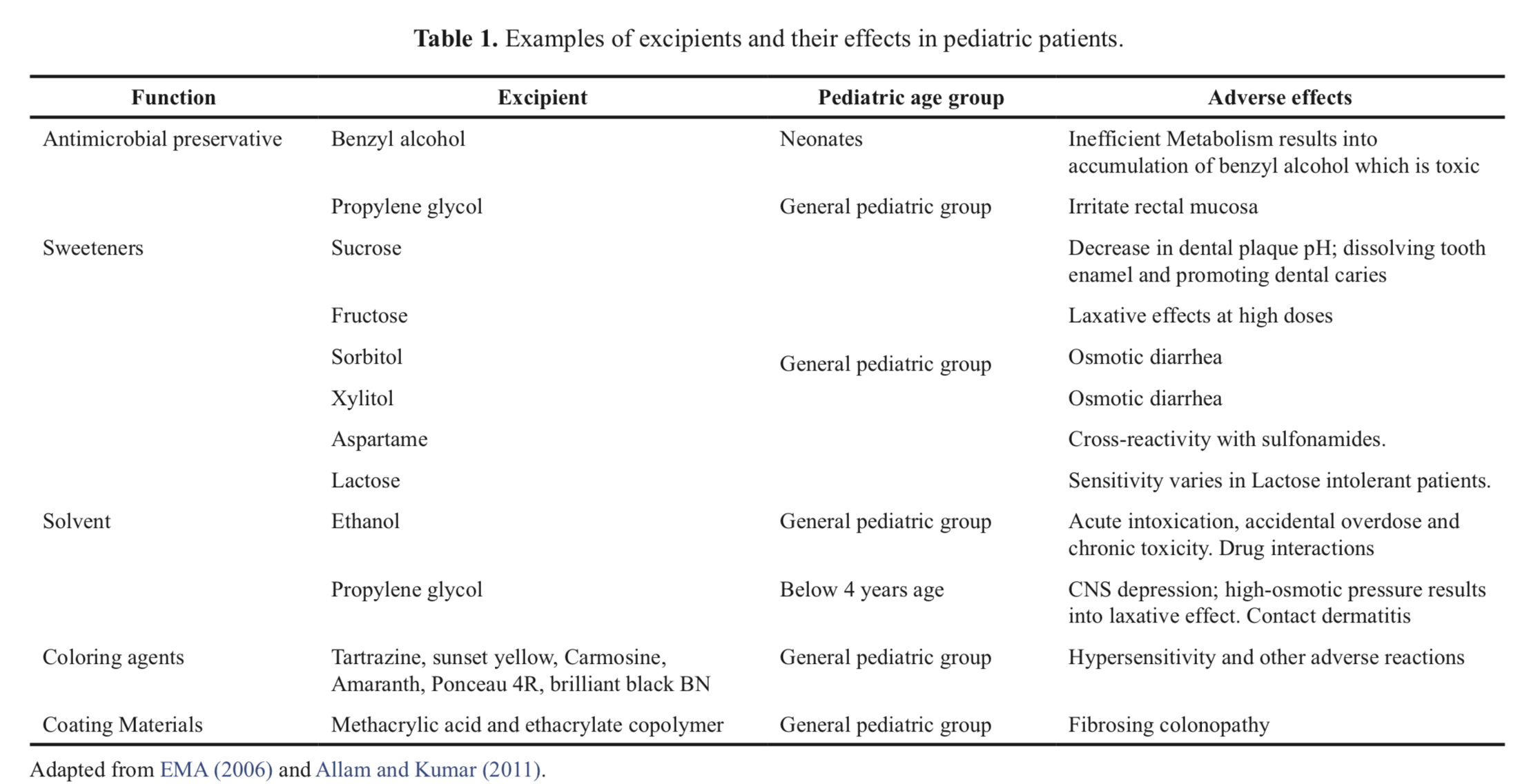Pediatric dosage forms—challenges and recent developments: A critical review

Pediatric population is a diverse group comprising of different subgroups. The use of unlicensed and off-label medicines for treating children is widespread due to the non-availability of suitable dosage forms for this age group. Although the physiological differences related to the diverse age group remain an important consideration, various other challenges such as insufficient background information on drug molecule, excipient safety, taste-masking issues, technology requirements, low profitability, limitations in conduct of clinical trials, and lack of regulatory clarity are also important factors adversely affecting pediatric dosage form development. These factors are discussed in this review. Liquids are the most preferred dosage form for children, especially of lower age. However, in the absence of suitable or labeled dosage forms, physicians and caretakers are left with no choice but to use off-label, “specials,” or extemporaneously prepared formulations. All such nonstandard formulations are devoid of relevant scientific data and hence pose a high risk to pediatric patients. The situation is even more serious with developing countries, where health care guidelines and controls for pediatric patients scarcely exist. Although, in the recent years, the safe, effective, and labeled dosage forms are increasingly becoming available, pediatric development still struggles to find a place in the mainstream pharmaceutical development programs.
Download the publication here: Pediatric dosage forms—challenges and recent developments
Amol Dattatreya Galande, Naveen Ahuja Khurana, Srinivas Mutalik
Journal of Applied Pharmaceutical Science Vol. 10(07), pp 155-166, July, 2020 Available online at http://www.japsonline.com DOI: 10.7324/JAPS.2020.10718
Keywords: Pediatric population, pediatric formulations, excipients for pediatric formulations, taste masking, pediatric drug delivery, benzyl alcohol, propylene glycol, sucrose, fructose, sorbitol, xylitol, aspartame, lactose, ethanol, propylene glycol, tartrazine, sunset yellow, carmine, amaranth, ponceau 4R, brilliant black BN, metharcrylic acid and methacrylate copolymer


